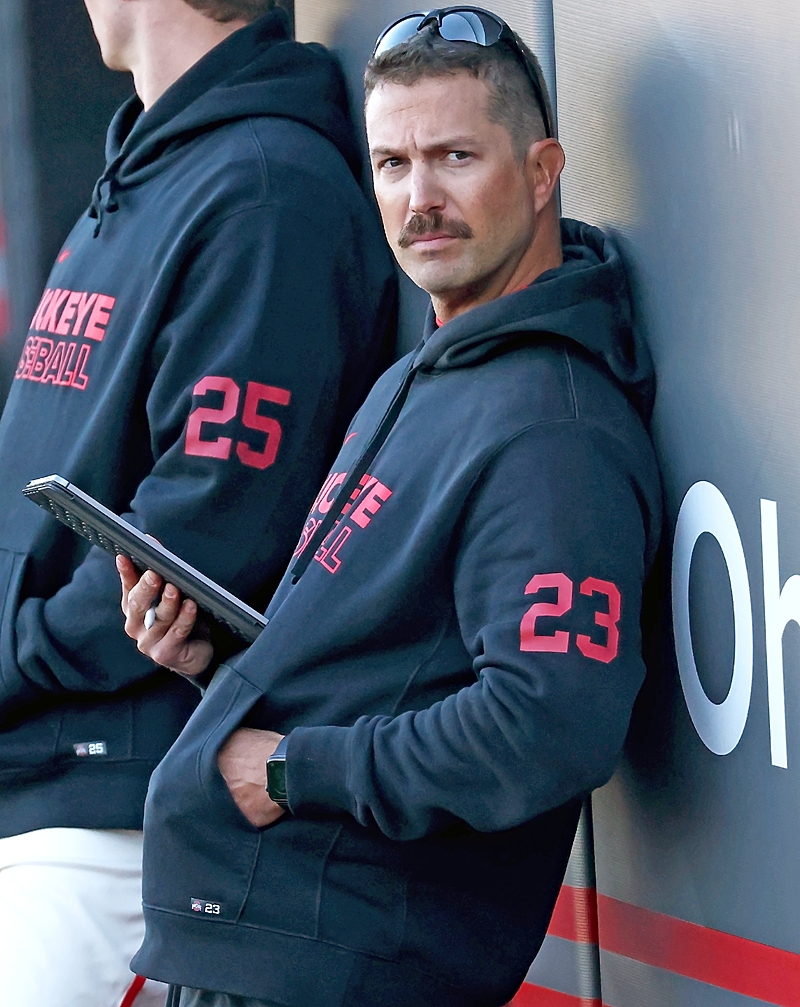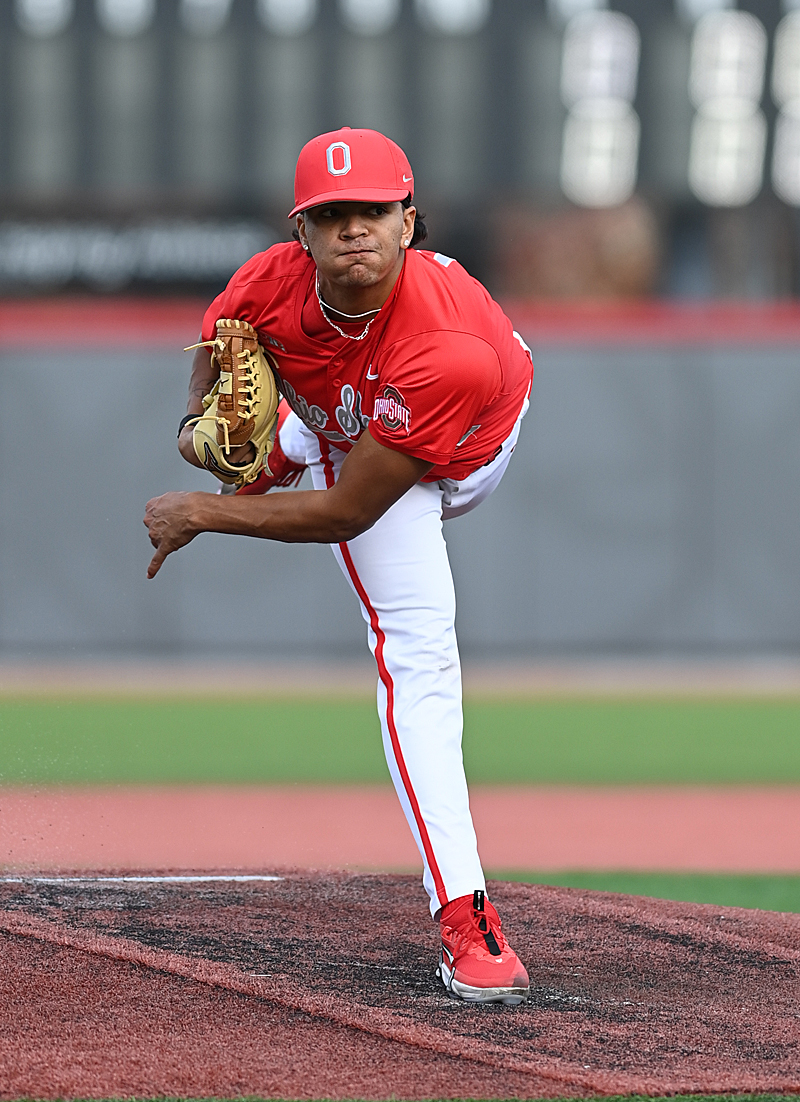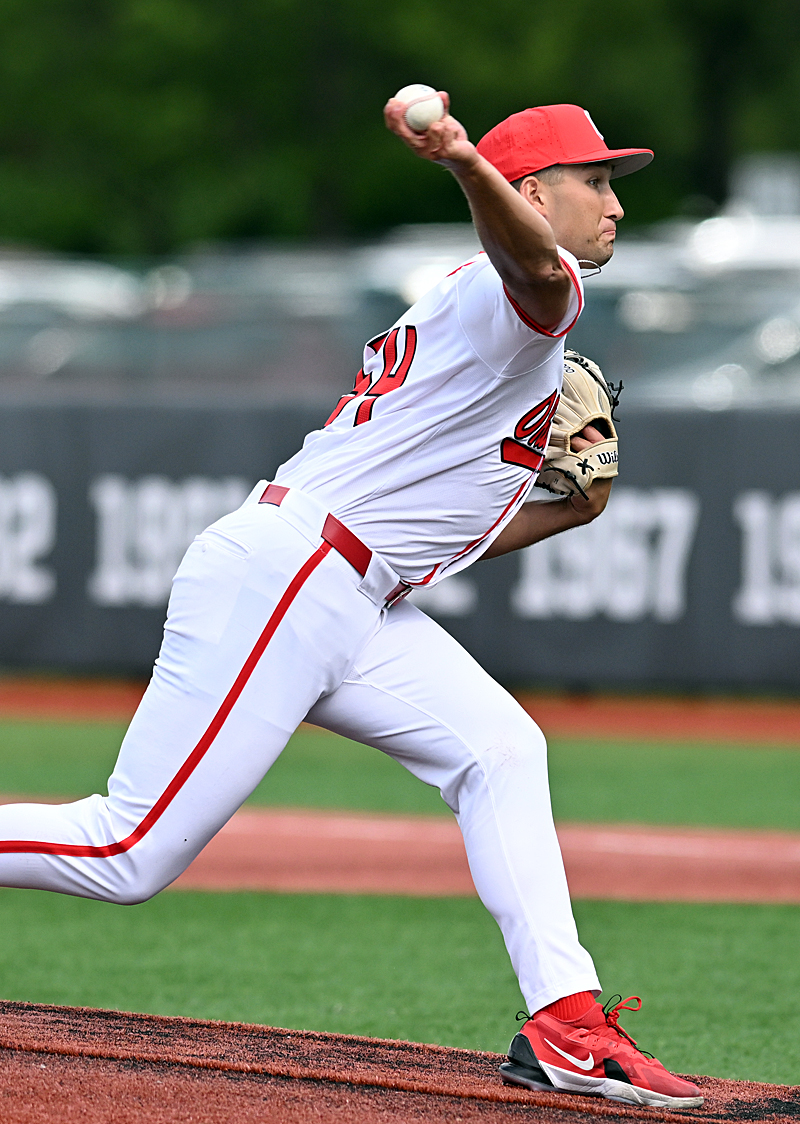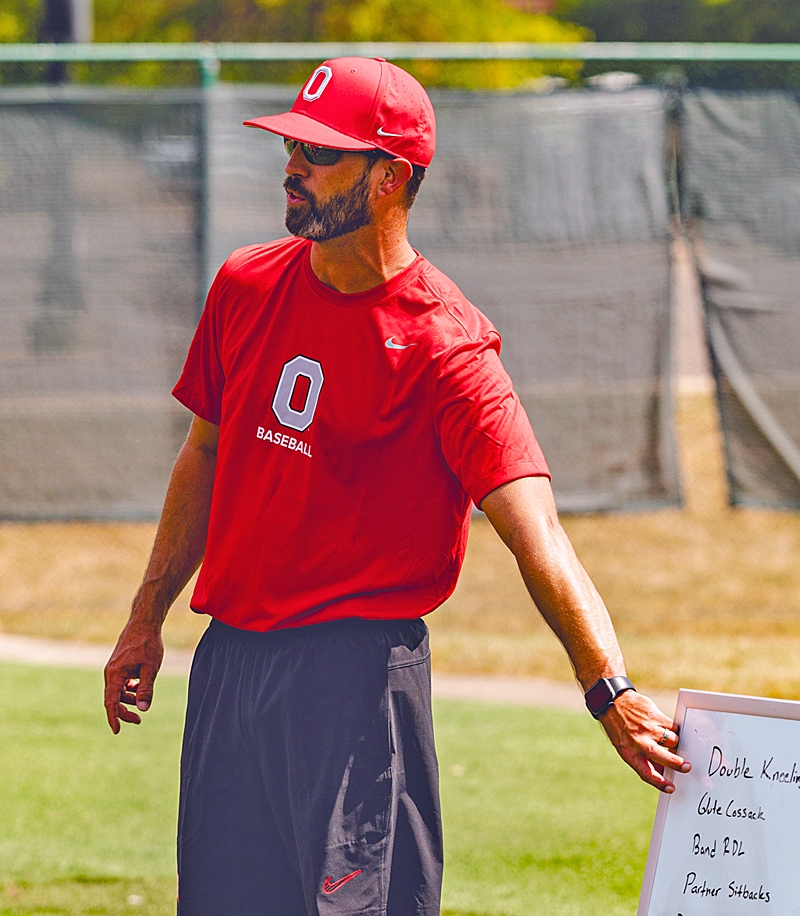Now counting the days, and not months, sharper focus comes to Buckeye baseball for the 2025 campaign…with new coaches, new players, and new thinking on an old pitching problem.
 If new baseball coach Justin Haire has had any time away from wondering about the unknown, he can take comfort in knowing he’s not alone.
If new baseball coach Justin Haire has had any time away from wondering about the unknown, he can take comfort in knowing he’s not alone.
You’re known by the company you keep.
Safety in numbers, they say.
“You should have my problems,” Casey Stengel used to say. “And you can look that up.”

Publisher Sonny Fulks writes OHSAA sports and the Buckeyes for Press Pros Magazine.
As a baseball legend and funny man, Stengel won seven world titles in ten seasons as manager of the New York Yankees, never dreaming of a day when simple, grass roots baseball would be dictated by things like NIL and the transfer portal.
He never worried about who’s available to pitch on opening day. He always had a pitcher – four of them..
He liked to say that good pitching would beat good hitting, and vice versa, which is not as twisted, or funny, as the old master made it sound.
“Just throw it across the plate and take your chances,” he once told a promising rookie. “If you do that you’ll have a good year with us. If you don’t, you’ll be pitching in Trenton.”
Good pitching is paramount to any successful baseball team, and new Buckeyes pitching coach Tyler Robinson, who matriculates from Liberty University, by way of nine seasons at Campbell, previously, is charged with figuring all of that out for a list of hopefuls for whom Trenton, New Jersey, or Trenton, Ohio, is not an option.
“The first priority is just to see that people are healthy and built up after holidays,” said Robinson last week, describing the first days of the Buckeyes’ last tune-up period before meeting Arizona State on February 14 in Tempe.

“A lot of them (pitchers) have big dreams and high ceilings and they can still achieve those goals. It’s important that we get to know their strengths, and for them to have supreme confidence in those strengths.” – Buckeye pitching coach Tyler Robinson (Photo by Kirk Irwin/Ohio State Athletics)
“The biggest thing for us last fall was to get to know the guys…and re-instill some of the beliefs that they had in themselves when they came out of high school,” he added.
Which can be taken as the reassembling and reassuring of that left by the previous regime.
“A lot of them have big dreams and high ceilings and they can still achieve those goals. It’s important that we get to know their strengths, and for them to have supreme confidence in those strengths. The trial and error phase of learning a new grip or new pitch [in the fall] is over now – the freedom to figure things out. Now you have go have confidence in what you can do well enough to get hitters out in the spring.”
Spoken like a true pitching coach, at least pitching coaches I’ve known, and Robinson is probably the exact right man at the right time for Ohio State pitching in 2025. Let me explain.
Some of the names are familiar…holdovers from the 2024 roster.
Many are not so familiar…new faces looking for new opportunity, a new beginning.

Want a greener, healthier lawn? We can help. contact Weedman USA at 614-733-3747 or go online to Weedman.com.
In fact, with some notable exceptions you might say that all fifteen who might pitch this spring are looking for a new direction. A lot of them left last spring’s Big Ten Tournament with bruised egos, and many of those who return come with some bruised stats – a team ERA of 6.35 and too many walks allowed. This is not exceptional. It just comes with college baseball.
But can you win with it? Like other rosters across the Big Ten the Buckeyes have some good arms hoping for an epiphany – command, and confidence – and how to find it.

Redshirt sophomore Sahil Patel (Buford, Georgia) is a live arm that impressed in the fall for his ability to challenge hitters.
“The issues of throwing strikes is all across baseball right now,” Robinson agrees, without sounding too concerned. “Walks are up because guys have better stuff – throw harder. And, there’s more accountability on the umpires. They’re being graded on ‘Trackman’, evaluated by supervisors, and the result is the strike zone becoming tighter.”
‘Trackman’ is an electronic device that measures the literal dimensions of the strike zone, like radar. And umpires adhere to the strict interpretation of ‘Trackman’ if they aspire to get a post-season tournament assignment. Significant, because college umpiring has become a most lucrative business.
“In high school you’re able to overpower some hitters who swing at pitches out of the strike zone,” Robinson continues. “Now you have to deal with the smaller zone, hitters taking those pitches, and getting ‘barreled’ more than you were used to in high school.”
‘Barreled’ is the modern vernacular in baseball of direct and hard contact between bat and ball.
“Pitchers shy away from pitching over the plate [like they did previously]. But now we have to show them that they can still have success over the plate – how to handle a perceived failure by giving up a hard hit (getting barreled). Again, it’s the matter of their strengths, and how do those strengths play within the strike zone.”

The Hughes Law office, in Urbana, sponsors OHSAA and Buckeye sports on Press Pros. Call them today if they can help you…Ph. 937-398-0520
Pitching coaches can talk for hours about theories, but in the end it really comes down to what Robinson said in one sentence. How do you successfully pitch to contact at a higher level of baseball? How do you pitch where there aren’t as many swings and misses? How do you pitch to hitters that don’t swing at bad pitches?
“Only the guys who throw 98 can survive in the strike zone without learning to pitch,” says Michigan State coach Jake Boss. “And when you face someone a second or third time they’ve got you timed. You’re going to get hit. You have to have an alternate pitch you can throw for a strike.”
So it’s not just ‘this’ pitching staff…it’s everyone’s pitching staff. And no safety in those numbers. Baseball is unforgiving.

Sophomore Jake Michalak has shown immense potential to conquer hitters…but has yet to conquer the strike zone.
Robinson is youthful, optimistic, and experienced in developing young arms into confident egos. And he’ll have his challenges.
Last year’s closer Blaine Wynk, a household word across the conference when you mention Ohio State, is working on the transition to weekend starter – the ultimate new direction.
Sophomore Chase Herrell, whose 3-1 record over 40 innings in 2024 is impossible to disregard, is the ultimate example of taking the next step.
Sophomore Jake Michalak is acknowledged by more than one to have the best ‘stuff’ on the staff…when he puts it in the vicinity of home plate. He would be a key figure looming, concerning 2025!
There’s a Luke Carrell, a transfer figure in the tradition of 2023’s Jonah Jenkins, a strike-throwing machine who burst upon the scene to anchor things with a 6-4 record over 56 innings. Carrell, who’s pitched at Oklahoma and at Florida JUCO, pitched like Jenkins in the fall.
There’s a Sahil Patel, out of Buford, Georgia and North Greenville University, a sophomore lefthander who impressed in the fall with his ability to challenge hitters – an Isaiah Coupet, if you will.
And true freshman, Tanis Lange, a lefthander from Wisconsin who might turn out to be Seth Lonsway incarnate, when Lonsway won 8 games and logged 92 innings as a freshman in 2019.

“We’re going to give up some hits,” says Tyler Robinson (above). “But they need to understand that their stuff is good enough to not give up runs.”
It’s enough to test your optimism. But Tyler Robinson has been tested before.
Importantly, he was part of the impressive ‘build’ of Campbell baseball for nine seasons under Justin Haire.
Significantly, he understands the modern challenge of college pitchers learning a new way to compete.
“We’re going to give up some hits,” he affirmed in our conversation this week. “That’s part of the game. You don’t worry about it. But we’re going to attack over the plate and [have them] understand that their stuff is good enough to not give up runs.
“Ultimately that’s what we’re worried about. Not giving up runs.”
And you can look that up.

The Dave Arbogast family of dealerships is the official transportation source for Press Pros Magazine.com.

